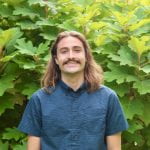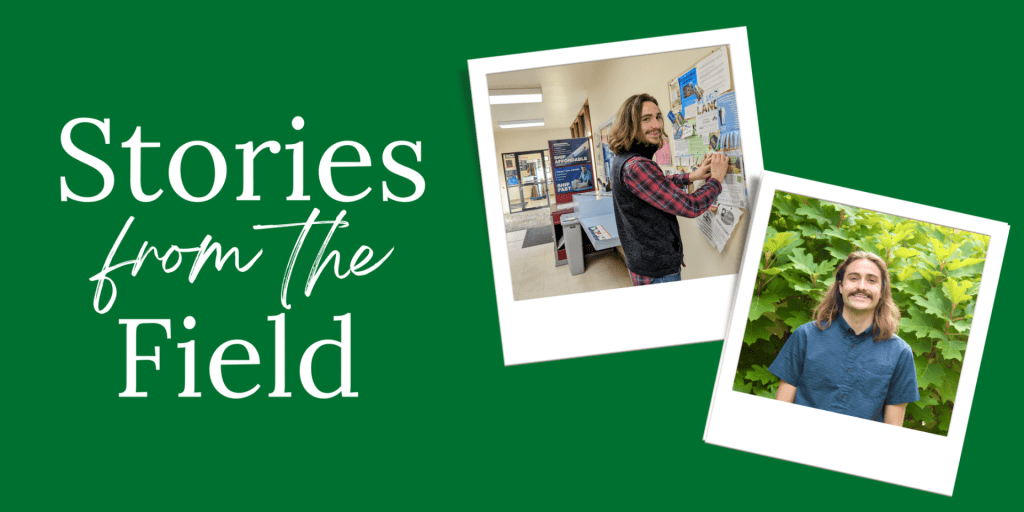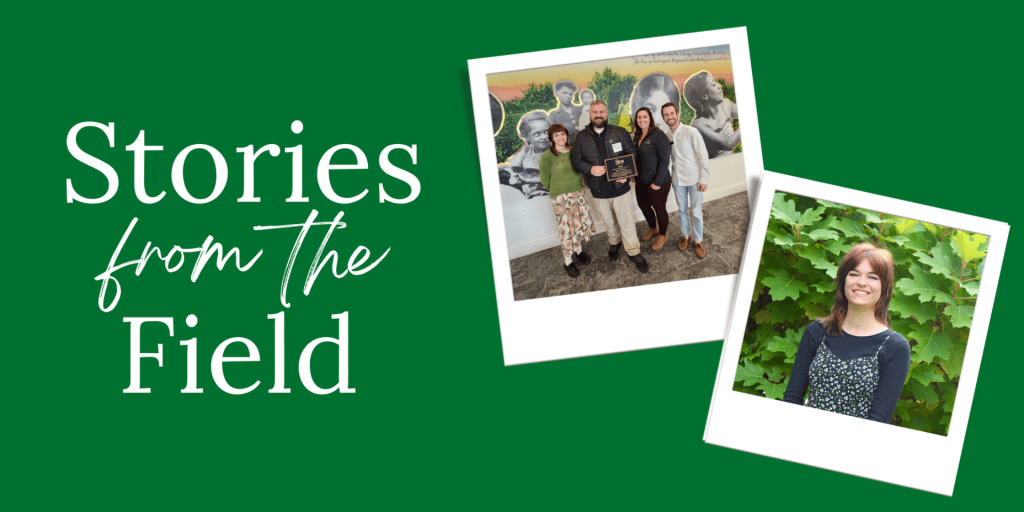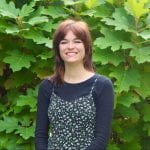by Braden Ravenscraft, Community Land Trust Program Associate, McKenzie Valley LTRG of Lane County
It had been a typical day in the “banana belt” that’s contained within the unincorporated communities up Highway 126 along the McKenzie River. When Eugene and Springfield are blanketed by a layer of grey in the dead of winter, there is often some sunshine up in the Cascade foothills. We were making a final pit stop in Blue River before heading back down to Springfield. There was one last sight to behold: north of downtown was a rainbow, visible over the wooden frame of the library being rebuilt.
The day’s upriver agenda for the McKenzie Community Land Trust (MCLT) team – consisting of the executive director and myself – included hanging flyers for upcoming community events we’ve planned, walking the property where construction will soon begin on six community land trust homes, and lunch with a couple of board members to catch up on all the progress lately. One of my projects is to coordinate energy efficiency and fire resiliency into the construction of those affordable homes. We were spending time on the property to assess the riparian zone and native plant presence with the “Pure Water Partners”, a regional program of the Eugene Water and Electric Board.
It’s a different experience as a RARE Member not living in the community you serve. I live in the second largest city in Oregon while serving some of the smallest unincorporated communities in the state. Or, as the McKenzie River locals refer to it, I live “in town”, and while they’ll head into town to run errands, they’d never think of living anywhere else other than the community their families have known for generations.
 I am continually inspired by the resiliency showcased by the McKenzie community. I never knew the area before the 2020 Holiday Farm Fire, but I hear stories from the past and believe in the shared vision for its future. I am also amazed at the dedication these folks have to helping their community. The board chair and one of the founding members of the MCLT is the superintendent and principal of the McKenzie Community School. He has been especially busy for much of my service year because he stepped up to become a bus driver for the school when that need arose.
I am continually inspired by the resiliency showcased by the McKenzie community. I never knew the area before the 2020 Holiday Farm Fire, but I hear stories from the past and believe in the shared vision for its future. I am also amazed at the dedication these folks have to helping their community. The board chair and one of the founding members of the MCLT is the superintendent and principal of the McKenzie Community School. He has been especially busy for much of my service year because he stepped up to become a bus driver for the school when that need arose.
Sure, like in any small community there are long-standing disagreements, and as a former timber hub, not everyone sees eye to eye. But overall, people are working together to rebuild from the devastating impacts of the fire. Blue River is looking great these days. The fire station is finished, and the frames for the wellness center and the library are up. The Frances O’Brien Memorial Library, that is, dedicated to the school teacher who started the library in 1928 on her front porch and maintained it for many decades with 24 hour access and no late fees.
It’s the little moments that make me relish the days upriver – I enjoyed a nice cornhole match with some locals at the McKenzie Celebration in October and shared lunch by the 100+ year old wood stove that used to belong to the grandmother of the gracious board member hosting on a cold January day.
This particular little moment, the rainbow over Blue River, has stuck with me. A sign of recovery and hope brightly making an appearance over the charred hillsides. Nobody has disaster recovery completely figured out. While this area can be described in a fun one-liner like “banana belt”, it is no longer a “goldilocks zone” safe from natural disasters. How do you rebuild a community from the ground up? In most cases, outdated water infrastructure is actually forcing that rebuilding to start below ground.
What I have learned is that it takes a lot of collaboration. Sometimes it feels like everyone in the state is working on this, and sometimes it feels like there’s just a few of us. Progress can be slow, even if the days are busy. Pausing for the little moments and appreciating them has always been a priority of mine, but it is taking on a new meaning as a RARE member. That moment may be a win in cornhole or the win that is agreeing on a meeting time that works for seven different community members, and I am here for all of it. I can tell that the McKenzie is getting stronger every day, and I am grateful to be able to contribute.
 About the author, Braden Ravenscraft: Braden grew up in rural Arizona and moved to Oregon to attend the University of Oregon, where he recently graduated with his degree in Planning, Public Policy, and Management. A lifelong love for the environment has led him to launch a career exploring how humans can adapt to a changing climate and world. His placement aligns with career interests in climate adaptation, affordable housing, and nonprofits, specifically land trusts. In his free time Braden likes to spend time outside running, hiking, and camping, as well as playing sports and cheering for the Ducks.
About the author, Braden Ravenscraft: Braden grew up in rural Arizona and moved to Oregon to attend the University of Oregon, where he recently graduated with his degree in Planning, Public Policy, and Management. A lifelong love for the environment has led him to launch a career exploring how humans can adapt to a changing climate and world. His placement aligns with career interests in climate adaptation, affordable housing, and nonprofits, specifically land trusts. In his free time Braden likes to spend time outside running, hiking, and camping, as well as playing sports and cheering for the Ducks.
Interested in gaining community and economic development experience of your own? Are you looking for a life changing experience in rural Oregon? Learn more about serving with the RARE AmeriCorps Program. Applications for Year 31 (2024-25) due April 28, 2024 by 11:59pm PDT.





